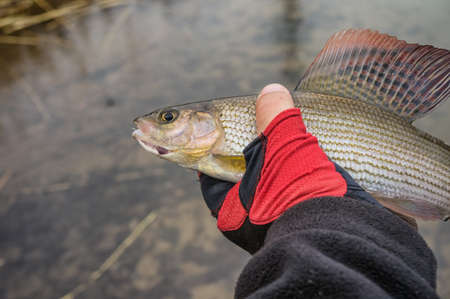Introduction to Barbel Fishing in Great Britain
If you’ve ever strolled along the leafy banks of a British river, chances are you’ve heard tales whispered by seasoned anglers about the elusive barbel. A warm welcome to the fascinating world of barbel fishing—a pastime woven into the very fabric of British countryside life. The barbel, with its sleek, muscular body and distinctive whisker-like barbels, is more than just a fish; it’s a cherished icon among those who love spending peaceful hours beside flowing water. Known for their remarkable strength and spirited fights, barbel have long held a special place in the hearts of UK anglers, becoming an emblem of both challenge and tradition. Whether you’re a seasoned fisherman or a curious newcomer, learning about the barbel’s role in British angling culture offers insight into a pastime that brings families together and fosters a deep respect for nature. So, pop on your wellies and join us as we gently cast off into the history, traditions, and enduring appeal of barbel fishing in Great Britain.
2. Historical Background of Barbel Fishing
Barbel fishing in Great Britain has a rich and fascinating history that stretches back centuries, weaving its way through the fabric of British angling culture. The earliest records of barbel fishing date to the medieval period, when rivers such as the Thames and Trent were famed for their abundance of this powerful fish. In those days, barbel was often regarded as a prize catch for both feasts and royal banquets, reflecting its esteemed place on the dining tables of the nobility.
As time marched on, traditional methods began to emerge, many of which have been lovingly passed down through generations. Early anglers relied on handcrafted rods made from greenheart or split cane, with simple lines and hooks fashioned by blacksmiths. Bait was typically natural—cheese paste, worms, and grubs being firm favourites among riverbank regulars. Over the years, these methods evolved but retained a deep respect for the skill and patience required to lure this elusive species.
Folklore surrounding barbel fishing is equally colourful. In some regions, local tales spoke of barbel luck, where catching one was believed to bring good fortune for the season ahead. Old anglers would share stories by the fireside about legendary specimens and mysterious pools thought to be enchanted by the spirits of ancient fishermen. These charming traditions continue to enrich the sport today.
| Era | Key Developments | Typical Equipment |
|---|---|---|
| Medieval | Barbel prized at royal feasts; emergence of river fishing culture | Simple wooden rods, handmade hooks |
| Victorian | Growth of angling clubs; early literature on barbel techniques | Split-cane rods, silk lines |
| Modern Day | Conservation efforts; popularity among family anglers | Carbon fibre rods, specialist baits |
The journey from medieval riversides to modern banks has left a legacy that British anglers cherish deeply. Today’s barbel fishing remains rooted in these age-old traditions and stories, making every outing not just a chance for a good catch, but an opportunity to connect with a living piece of Britain’s cultural heritage.

3. Barbel Fishing Techniques and Tackle
Barbel fishing has long been a cherished tradition along the rivers of Great Britain, with anglers passing down their favourite techniques and tackle choices through generations. Over the years, both traditional and modern methods have evolved, reflecting changes in technology and angling culture. Let’s take a closer look at how British barbel anglers approach their craft, from classic riverbank tactics to innovative gear and baits.
Traditional Techniques and Tackle
In days gone by, barbel fishing was often a test of patience and skill. Anglers favoured simple yet effective methods that relied on understanding the river and the behaviour of these powerful fish. The centrepin reel paired with a long, soft-action rod was a popular choice, allowing for precise presentation of bait in flowing water. Classic baits included luncheon meat, cheese paste, and worms—ingredients often prepared at home or sourced locally.
Contemporary Approaches
Today’s barbel anglers enjoy an array of specialised equipment and advanced tactics. Fixed-spool reels have largely replaced centrepins for many, offering improved casting distance and control. Rods are now designed specifically for barbel, with greater sensitivity and strength to handle lively specimens. Modern baits such as pellets, boilies, and flavoured pastes have become common, often enhanced with attractants to tempt wary fish.
Comparison Table: Traditional vs Contemporary Barbel Fishing
| Aspect | Traditional | Contemporary |
|---|---|---|
| Tackle | Centre pin reel, cane/soft glass rod | Fixed-spool reel, carbon/composite rod |
| Mainline | Silk/cotton lines (later nylon) | Braided or high-tech monofilament lines |
| Bait | Luncheon meat, cheese paste, worms | Pellets, boilies, flavoured pastes |
| Tactics | Trotting baits downstream, ledgering with minimal weight | PVA bags, method feeders, hair rigs |
| Approach | Intimate knowledge of local swims; homemade rigs and baits | Scientific approach; use of electronics (bite alarms), commercial rigs and additives |
A Blend of Old and New on the Riverbank
Despite the advances in tackle and technique, many British families continue to cherish traditional ways—passing down stories of memorable catches alongside hand-tied rigs. Whether using time-honoured methods or embracing new innovations, barbel fishing remains a warm tradition woven into the fabric of British countryside life. It’s not just about landing a big fish; it’s about enjoying the peaceful rhythm of the river and sharing special moments with loved ones under the English sky.
4. Regional Traditions and Social Gatherings
Barbel fishing in Great Britain is much more than just a pastime; it’s woven into the fabric of local communities, with each region developing its own customs and cherished gatherings over the years. This sense of tradition is especially evident along the iconic rivers Thames, Trent, and Severn, where barbel angling has shaped not just sporting habits, but also social life.
Local Customs on Iconic Rivers
The approach to barbel fishing often varies by river, reflecting the character and history of each region. On the River Thames, for example, anglers might gather at dawn for a quiet start, enjoying a flask of tea as mist rises from the water—often passing down secret bait recipes or favourite swims through generations. Meanwhile, the Trent is known for its competitive spirit and inventive tackle setups, with groups of friends and families setting up camp along the banks for entire weekends during peak season. The Severn’s anglers, on the other hand, are famous for their storytelling—sharing tales of legendary catches late into the evening.
Community Spirit and Annual Events
Barbel fishing isn’t just an individual pursuit; it brings people together in unique ways. Many villages hold annual barbel festivals or friendly competitions, turning a day on the river into a highlight of the local calendar. These events often feature traditional food stalls, family activities, and even charity raffles—all centred around a shared love for barbel and river life.
Key Rivers and Their Traditions
| River | Notable Traditions | Community Events |
|---|---|---|
| Thames | Dawn gatherings, secret bait recipes | Summer barbel meets, riverside picnics |
| Trent | Innovative tackle use, weekend camps | Annual barbel championships, youth angling days |
| Severn | Tale-telling sessions, night fishing socials | Family-friendly festivals, charity matches |
A Family Affair: Passing Down Traditions
Many British families have grown up together on these riversides—grandparents teaching grandchildren how to spot the best swims or prepare groundbait. The laughter shared on grassy banks or over sandwiches in rain-soaked shelters is all part of what makes barbel fishing so special in Great Britain. Whether you’re an old hand or a newcomer, joining in these regional traditions is a heartwarming way to feel at home among fellow enthusiasts.
5. Conservation Efforts and Environmental Awareness
Barbel fishing in Great Britain is much more than simply landing a prized catch – it’s about nurturing the rivers and ensuring the health of this cherished species for generations to come. The barbel, with its preference for clean, well-oxygenated waters and gravelly riverbeds, serves as a vital indicator of river health. Because of this, conservation has become a heartfelt mission within the angling community.
The Importance of Conservation
Many British anglers see themselves as stewards of the waterways. Without careful management and respect for the environment, barbel populations can quickly decline due to pollution, habitat loss, or overfishing. Clubs and local groups often collaborate on initiatives like riverbank clean-ups, tree planting, and monitoring water quality to help maintain suitable habitats for barbel.
Key Factors Affecting Barbel Conservation
| Factor | Impact on Barbel | Community Response |
|---|---|---|
| Water Pollution | Reduces oxygen levels; harms spawning grounds | Promoting responsible farming; regular water testing |
| Habitat Loss | Destroys essential breeding areas | Riverbank restoration projects; rewilding efforts |
| Overfishing | Puts pressure on populations | Catch-and-release practices; strict bag limits |
The Role of Anglers in Nurturing the Species
Passionate barbel anglers are at the forefront of conservation efforts across Great Britain. Many practice catch-and-release fishing, using barbless hooks and handling fish with wet hands or mats to minimise harm. There’s also a strong emphasis on educating newcomers about responsible angling practices—passing down values that help protect both fish and river habitats.
Raising Environmental Awareness Through Community Action
Local angling clubs frequently host workshops, family days by the riverside, and school visits that highlight the delicate balance of river ecosystems. These events foster a sense of shared responsibility and ensure that young anglers appreciate not just the excitement of fishing, but also the importance of giving back to nature. Together, these collective actions form a strong foundation for the future of barbel fishing in Britain—where care for the environment goes hand-in-hand with cherished traditions.
6. Cultural Significance and Lasting Legacy
Barbel fishing is more than just a pastime in Great Britain; it is a cherished tradition that has shaped the way families and friends spend their leisure time together. For many, it evokes memories of peaceful mornings along the riverbank, learning to cast a line with a parent or grandparent, and sharing stories about the “one that got away.” These moments not only create lasting bonds between generations but also instil important values such as patience, respect for nature, and appreciation for quiet reflection.
The Role of Barbel Fishing in British Leisure
| Aspect | Description |
|---|---|
| Family Bonding | Fishing trips offer quality time for parents, children, and grandparents to connect away from modern distractions. |
| Community Events | Local angling clubs often organise competitions and gatherings, fostering a sense of community spirit. |
| Personal Wellbeing | The calmness of riverside settings encourages mindfulness and relaxation, supporting mental health. |
Weaving Memories Across Generations
In countless British households, barbel fishing tales are passed down like treasured family heirlooms. The act of teaching a youngster how to bait a hook or cast for barbel becomes a rite of passage, weaving memories through time. It is not uncommon to find old photographs capturing proud smiles next to impressive catches—a visual record of family history intertwined with the waterways of Britain.
Values and Traditions Preserved
The enduring appeal of barbel fishing lies in its ability to bring people together while preserving the natural beauty of British rivers. Anglers are often among the most passionate conservationists, advocating for river health and sustainability so that future generations can enjoy this beloved pursuit. Through shared experiences on the banks of the Thames, Severn, or Trent, families continue to foster traditions that celebrate patience, sportsmanship, and environmental stewardship.
Barbel fishing’s legacy is found not only in photo albums or well-worn tackle boxes but in the shared laughter, quiet companionship, and gentle lessons about nature that ripple through British society. In this way, the cultural significance of barbel fishing endures—enriching lives and shaping cherished family traditions across the generations.


